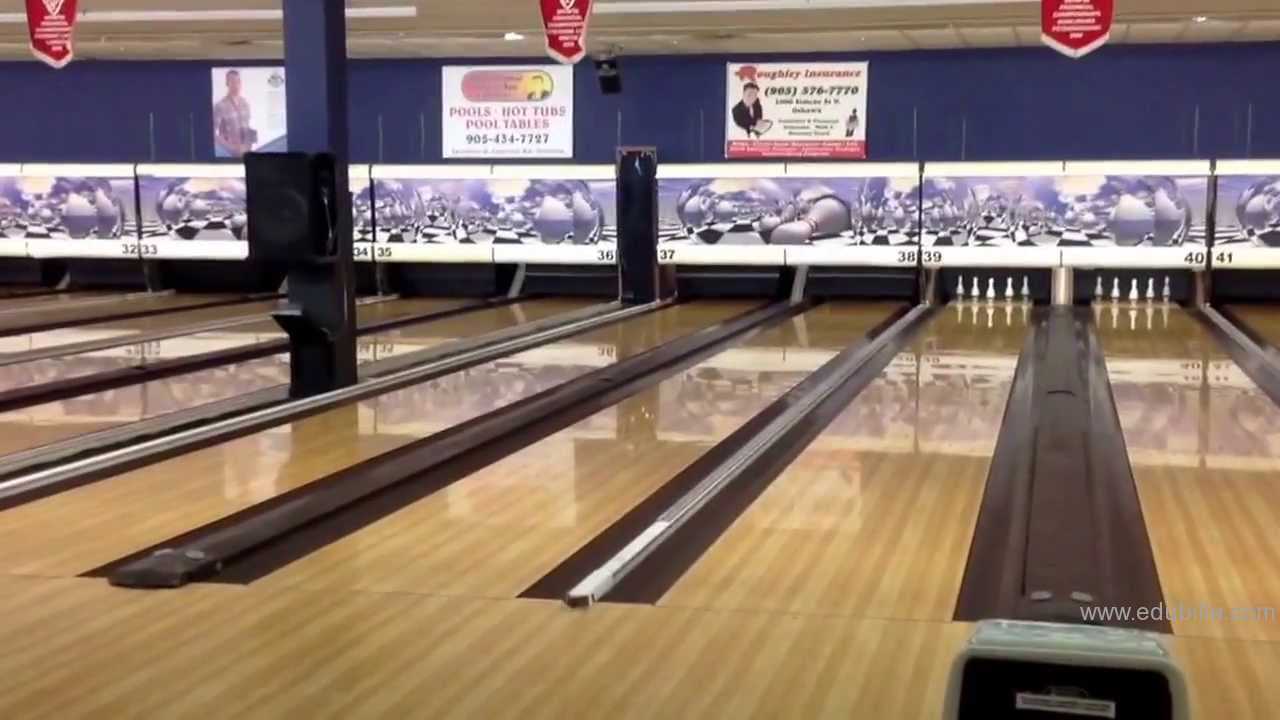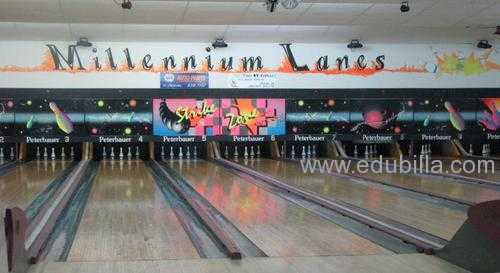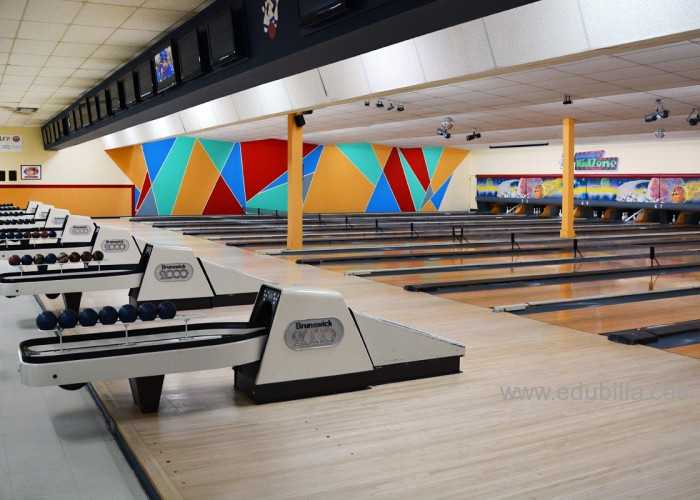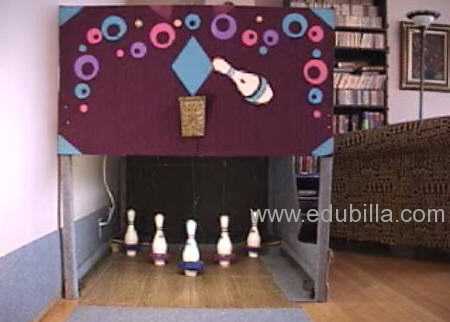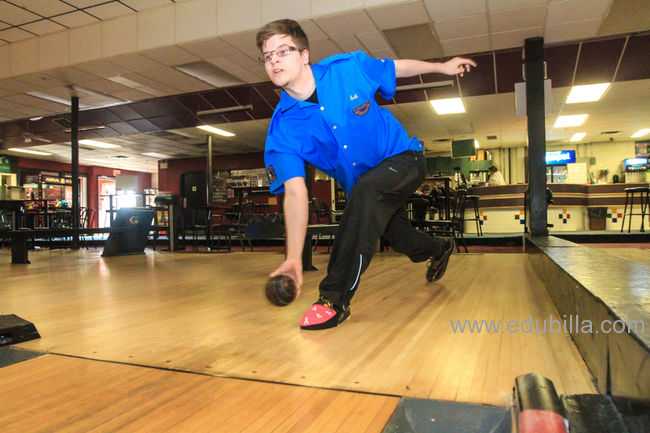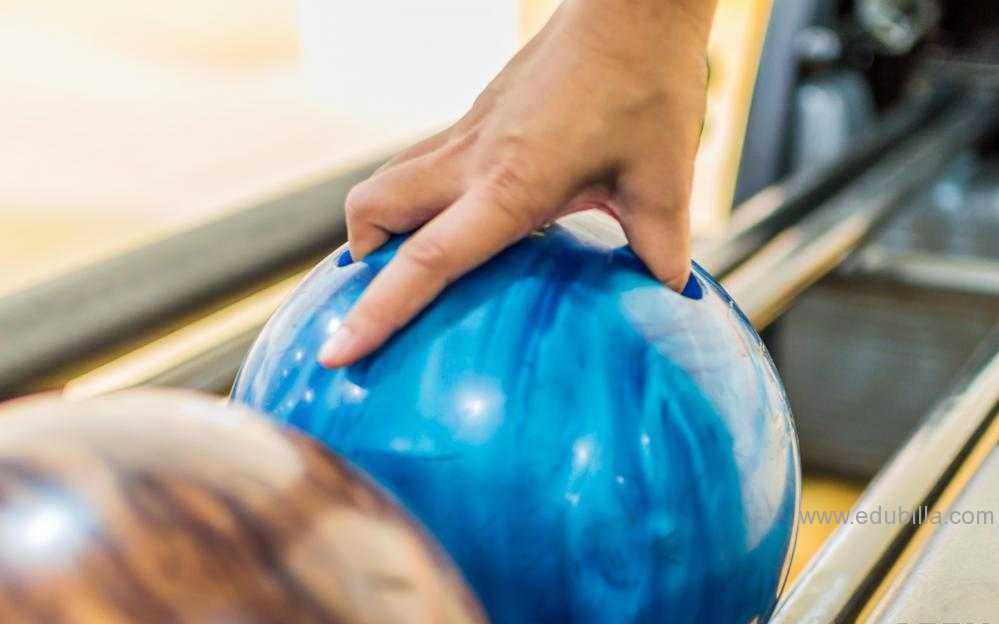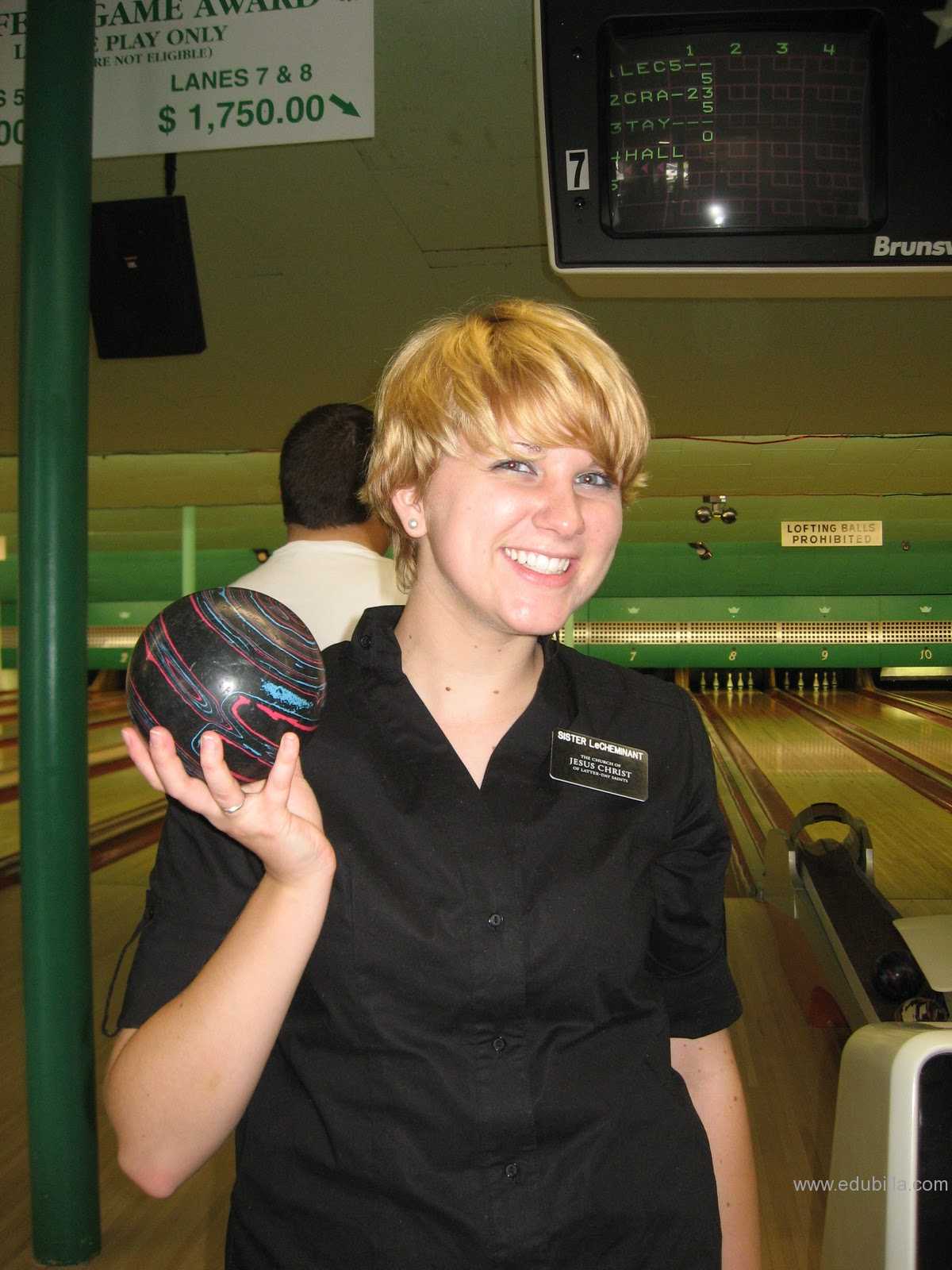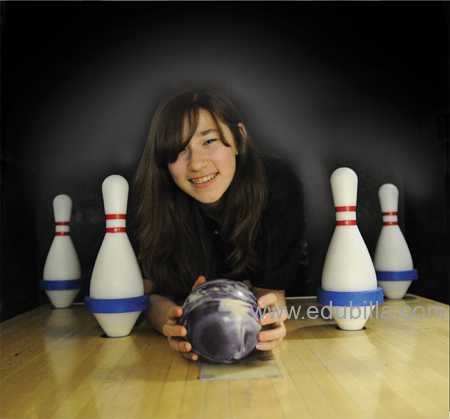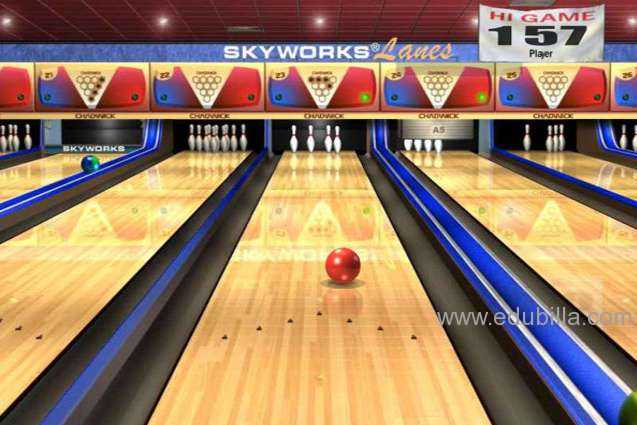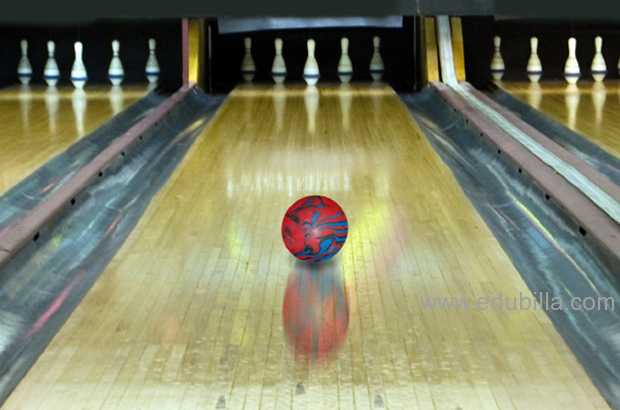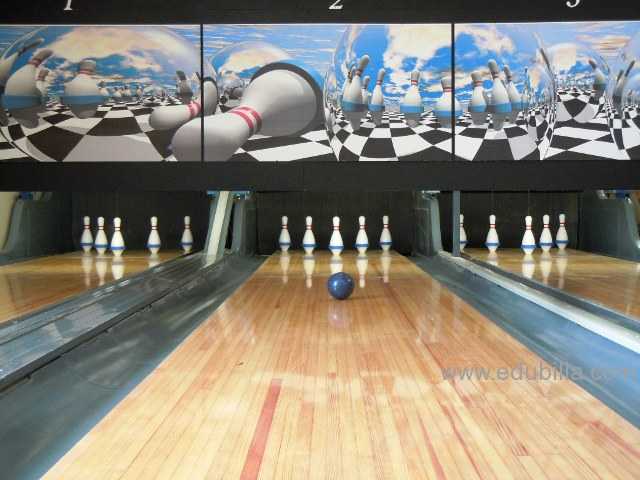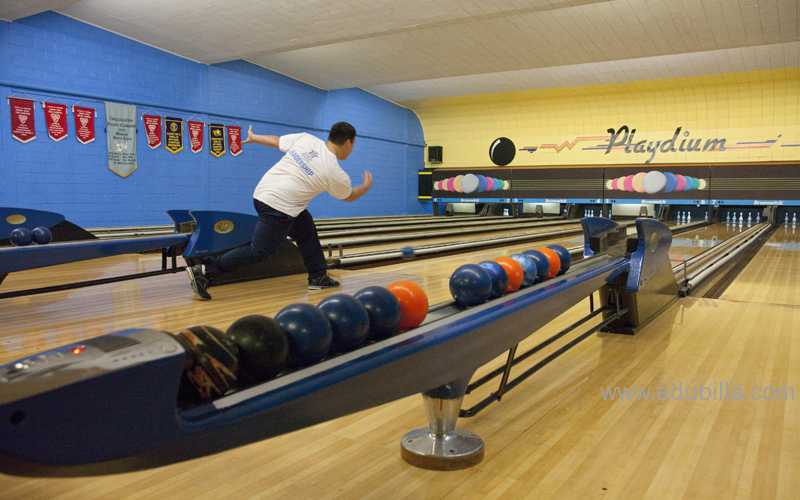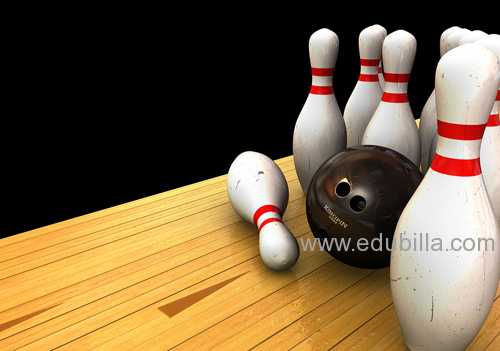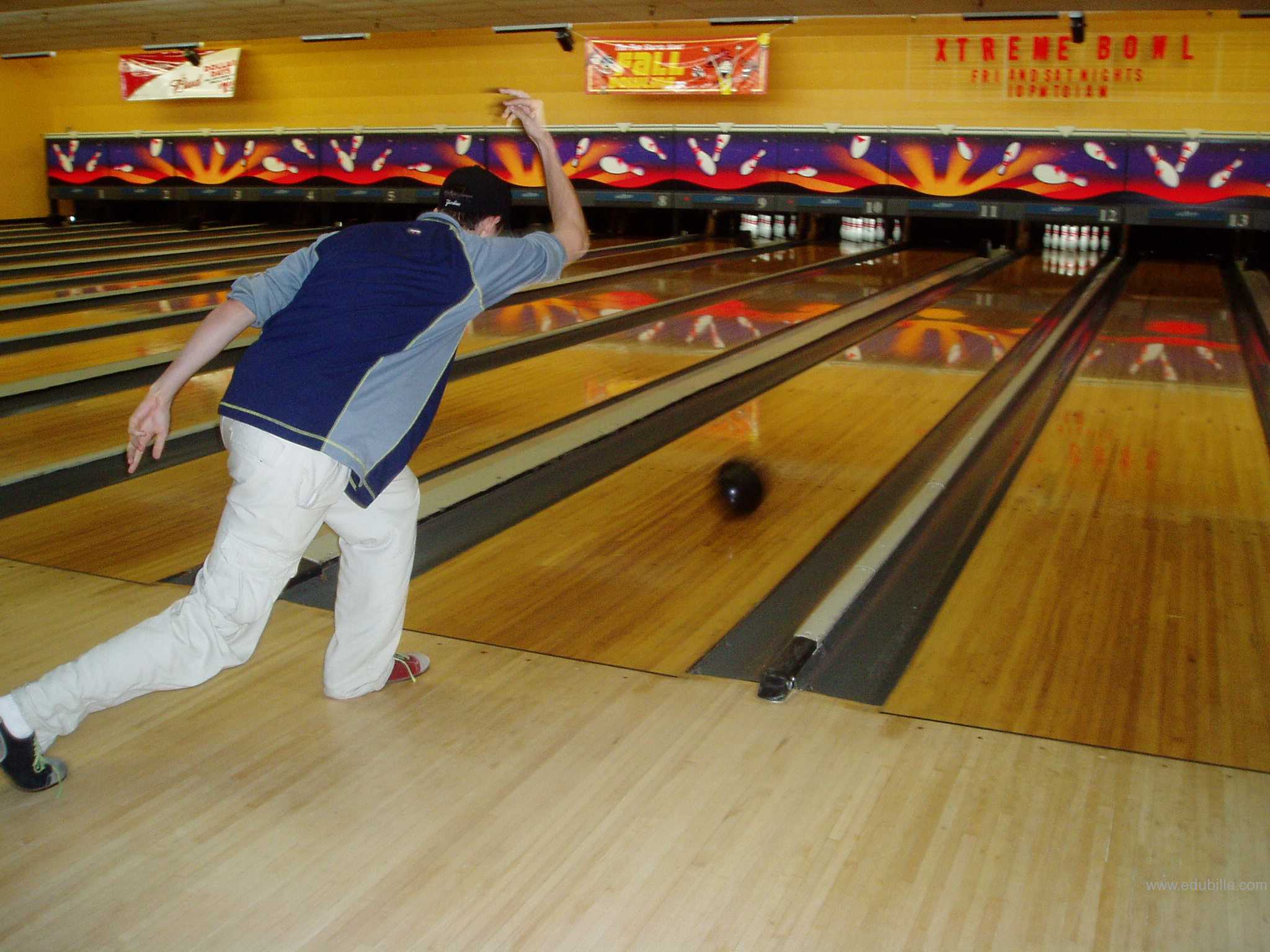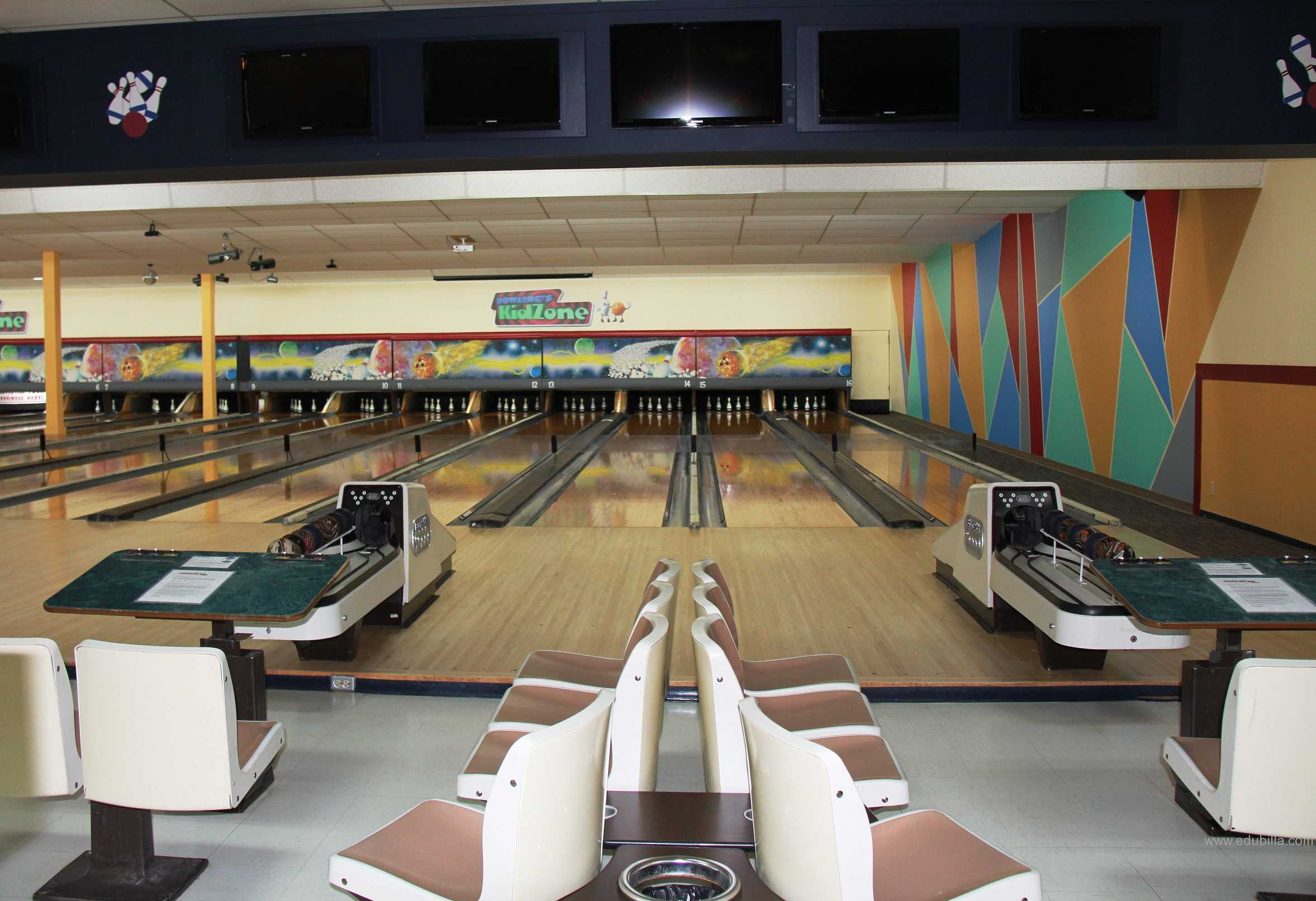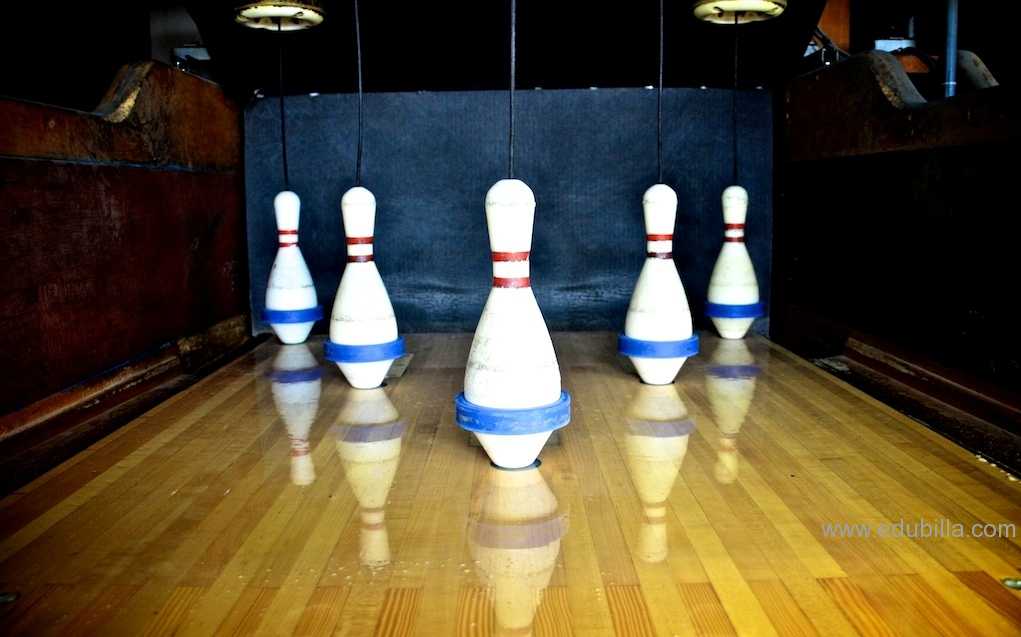
Overview Of Five-pin bowling
Five-pin bowling is a bowling variant which is played only in Canada, where many bowling alleys offer it, either alone or in combination with ten-pin bowling. It was devised around 1909 by Thomas F. Ryan in Toronto, Ontario, at his Toronto Bowling Club, in response to customers who complained that the ten-pin game was too strenuous. He cut five tenpins down to about 75% of their size, and used hand-sized hard rubber balls, thus inventing the original version of five-pin bowling.
Indoor bowling:
In 5 pin bowling, the bowling pins are 25% smaller than in ten pin. The bowling ball itself is hand-sized, completely without holes and is easy to roll. At the end of the bowling lane, five pins are arranged in a V shape.
Five pin bowling terminology:
Five pin bowlers use a number of terms to denote the results of a throw:
"[number]-pack": Term for a number of consecutive strikes; e.g. six consecutive strikes is a "six-pack". Also referred to as "[number]-bagger" (e.g. six-bagger).
"10 the hard way": After the third ball, having a frame score of 10 where the remaining pins are a 3-pin and a 2-pin that are not "neighbours".
"Aces" (A): taking out the headpin and both three pins but leaving the two corner pins. Also referred to as "bed posts" or "goal posts".
"Chop" or "chop-off" (denoted ): Hitting the headpin and the 3 and 2 pins on one side on the first ball, leaving the other 3 and 2 pins on the other side.
"Clean game": Finishing a game with a strike or spare in every frame.
"Corner-pin": Leaving only the left corner pin or right corner pin standing on the first ball is denoted by an "L" or an "R" respectively on a score sheet.
"Fifteen": When all pins are knocked down after the third ball. Also referred to as a "clean up".
"Headpin" (denoted H on a score sheet): punching the headpin on the first ball. The most dreaded result on the first ball as a "headpin-spare" is extremely difficult to achieve.
"Punch": Hitting only one pin when two or more pins are remaining (commonly known as a "cherry" on the 2nd or 3rd ball)
"Split" (S): Taking out the headpin and one of the three-pins, scoring 8 on the first ball. Difficult to obtain a spare on the second ball but if accomplished, this is known as a "split-spare". Many bowling associations will offer a special pin for this achievement.
"Strike out": Finishing the game with Three or more strikes.
"Turkey": Three consecutive strikes
"Wood" or "deadwood": The pins left on the lane, usually after throwing the first two balls of a frame. This originates from when bowling pins were typically made of wood and not acrylic.
Game Rules
Game:
A game of 5 Pin Bowling shall consist of ten (10) frames and shall be played with regulation equipment on regulation lane-beds.
Frame:
A frame shall consist of three legally delivered balls made by the same bowler in succession, except where such bowler shall roll a strike (one ball) or a spare (two balls).
If a strike or spare is made, the frame is considered complete, except if the bowler records a strike or spare in the tenth frame, then the bowler shall
immediately bowl one or two balls, as may be necessary to complete the tenth frame and game.
Playing area:
The playing area shall be defined as the lane-bed surface immediately past the foul line and extending to the end of the pit.
Scoring:
First Frame:
On the First Delivery, only the headpin was bowled down. The headpin symbol "HP" is marked in th first small square of the first frame.
On the Second Delivery, the left 3 and 2 pins were bowled down. The total value or "count" of 5 points is entered into the second small square of the first frame.
On the Third Delivery, the ball did not knock down any pins but remained on the lane surface until leaving the end of the lane (did not enter the channels). The missed shot symbol "-" is placed in the third small square of the first frame. The three small squares are then added (the point value for the "HP" is 5 and the point value for "-" is 0) and the score of "10" is entered in the bottom half of Frame #1.
Second Frame:
On the First Delivery, all the pins except the right corner pin (2 Pin) were bowled down. The right hand corner pin symbol "R" is marked in the first small square of Frame #2.
On the Second Delivery, the right hand corner pin is bowled down. This is called a "SPARE" and it's symbol "/" is marked in the second small square of Frame #2. Since a spare is worth 15 points plus the count earned on the next ball delivered in the subsequent frame, the score is not entered for Frame #2 until the first ball of the third frame has been bowled.
Third Frame:
On the First Delivery, all pins except the two corner pins were bowled down. This is called ACES and its symbol "A" is denoted in the first small square of Frame #3. The corresponding count for aces (11) is also placed in the third small square of the second frame, giving the spare a value of 26 points (15 points for the spare plus the 11 bonus points awarded for the pins bowled down on the first ball of the third frame). The score of 36 may now be entered into the bottom half of Frame #2. This is determined by adding the game score of 10 (from the first frame) to the second frame count of 26.
On the Second Delivery, the left corner pin (2 pin) was bowled down. The corresponding count of 2 points is entered in the second small square of Frame #3.
On the Third Delivery, the ball entered the right channel and did not bowl down any pins. The "Out of Bounds" shot is marked in the third small square of the frame as "-" and is worth 0. Adding the three small squares of Frame #3 gives you a count of "13" points which is added to the score of 36 (from Frame #2) and produces a score of 49 in the third frame
Fourth Frame:
On the First Delivery, all the pins except the left hand corner pin (2 pin) were bowled down. The left hand corner pin symbol "L" is marked in the first small square of Frame #4 (The pin count for "L" is 13).
On the Second Delivery, the pin was missed but the ball didn't enter the channel. A "-" symbol (missed shot) is marked in the second small square of the fourth frame.
On the Third Delivery, the pin was missed again and as before the ball did not enter the channel. The missed shot symbol "-" is entered in the third small square of Frame #4. Adding the three small squares of Frame #4 gives you a count of "13" points for the frame and a score of 62 pins which is placed in the bottom half of the fourth frame.
Fifth Frame:
On the First Delivery, the headpin was missed and the ball knocked down the right 3 and 2 pins. No symbol is entered, but the numeral "5" (representing the point value of the two pins bowled down) is entered in the first small square of the fifth frame.
On the Second Delivery, the remaining pins were bowled down and a spare "/" is indicated in the second small square of Frame #5. Again, the frame score is not entered for Frame #5 until the bonus count from the first ball delivered in the next frame has been determined.
Sixth Frame:
On the First Delivery, all pins were bowled down. This is called a "STRIKE" and is indicated on the scoresheet by placing a "" symbol in the first small square of Frame #6. You may now complete the count for the spare recorded in the fifth frame. A spare is worth 15 pints plus the value of the first ball delivered in the next frame. Since a STRIKE was rolled on the first ball of the sixth frame, the bonus count added to the spare is 15 more points. This is denoted on the scoresheet by placing 15 in the third small square of the fifth frame thus making the count for the fifth frame worth a total of 30 points (15 points for the spare + 15 points for the strike). These 30 points are then added to the score of 64 (from frame #4) giving you a new score of 92 points in the fifth frame. Since a strike is worth 15 points plus the value of pins bowled down on the following (next) two deliveries, the game score cannot be entered in the sixth frame until completion of these two deliveries.
Seventh Frame:
On the First Delivery, another STRIKE is rolled. This give you two successive strikes (one in the sixth frame and one in the seventh frame). This is called a DOUBLE. The Strike symbol "" is entered in the first small square of Frame #7 and 15 points is entered into the second small square of Frame #6 which represents the first of the two bonus deliveries allowed for a strike.
Eighth Frame:
On the First Delivery, a STRIKE is rolled again. Another strike symbol "" is placed in the first small square of Frame #8. You now have three strikes in a row. This is called a "TRIPLE". You must also enter "15" points in the third small square of the sixth frame as the strike rolled in the eighth frame represents the second bonus delivery allowed for the strike bowled in the sixth frame. You may now complete the count for the sixth frame by adding the three small squares for the frame. The first small square contains a strike symbol, which is worth 15 points, the second small square contains a value of 15 points as does the third small square. This gives you a total of 45 points for Frame #6. Adding the 45 points to the score of 92 (from the fifth frame) give you a new score of 137 for six frames. The strike bowled in the eighth frame also represents the first of two bonus deliveries allowed for the strike rolled in the seventh frame. Indicate this by placing its point value (15) in the second small square of Frame #7.
Ninth Frame:
On the First Delivery, the head pin and left 3 pin were bowled down. This is called a SPLIT and its symbol "HS" is marked in the first small square of Frame #9. This SPLIT also represents the second bonus delivery of the strike bowled in the seventh frame as well as the first bonus delivery of the strike bowled in Frame #8. Place the corresponding point value for a split (8 points) in the third small square of Frame #7 and again in the second small square of Frame #8. The frame total can now be completed for the seventh frame as both bonus deliveries allowed for the strike have been completed. Total the three small squares... 15 points for the strike symbol + 15 points for the first bonus ball + 8 points for the second bonus ball = 38 points for the seventh frame. Add these 38 points to the score of 137 (Frame #6) and record the new score of "175" in the bottom half of Frame #7.
On the Second Delivery, the right 3 Pin and right 2 Pin were bowled down, but the bowler went across the FOUL LINE. Record the count for the ball (5 points) in the second small square of Frame #9. YOU MUST ALSO RECORD THE FOUL! Place the Foul symbol "F" immediately below the second small square of the ninth frame and again in the top right hand corner of the "TOTAL COLUMN" (at the extreme right side of the bowler's game). This symbol tells you two things. First the foul was committed on the second ball of the ninth frame and secondly, the "F" symbol in the total column, reminds the scorekeeper that a penalty of 15 points must be deducted from the bowler's score at the conclusion of the bowler's game. The count of the second ball in the ninth frame (5 points also represents the second bonus ball allowed for the strike bowled in the eighth frame. In the third small square record these 5 points then total the count for the frame. 15 points (for the strike) + 8 points (for the first bonus ball) + 5 points (for the second bonus ball) = 28 points. This count (28) is added to the score from the seventh frame, giving a new score of "203" in Frame #8.
On the Third Delivery, the left corner pin is bowled down which is denoted as "2" in the third small square of the ninth frame. Since no strike or spare has been made in the ninth frame, you can complete the ninth frame by adding the three small squares (8 + 5 + 2 = 15) then add this frame count to the score from the eighth frame (203) and enter the new score of "218" in the bottom half of Frame #9.
Tenth Frame:
On the First Delivery, the headpin, right 3 pin and right 2 pin were bowled down. This is called a CHOP-OFF and is denoted by placing its symbol "C/O" in the first small square of the tenth frame.
On the Second Delivery, the two remaining pins were knocked down, giving the bowler a SPARE. Record the spare by placing its symbol "/" in the second small square of the tenth frame. Although the bowler has recorded a spare, the game is not complete because a spare is not complete until a subsequent delivery has been made and its point value added to the 15 points represented by the spare. IN THE TENTH FRAME, YOU MUST BOWL THREE BALL NO MATTER WHAT! This allows for the completion of counts for STRIKES or SPARES made in the final frame.
On the Third Delivery, only the right 3 pin is bowled down. This is recorded as "3" in the third small square of the tenth frame. Calculate the count for the tenth frame by adding the three small squares. REMEMBER...ALL COUNTS PRECEDING A SPARE SYMBOL IN A FRAME ARE DISREGARDED. Therefore, the count for the tenth frame is 18 points (15 points for the spare + 3 points on the bonus or third ball). Add the 18 points to the score from Frame #9 and enter the sum (236) in the bottom half of the tenth frame.

Finishing Frame:
For each foul committed during a game, 15 points are deducted from the game score upon conclusion of the bowler's game. Since only one foul was committed by the bowler in this game (in Frame #9), we will subtract 15 points from the score of 236. We then enter the FINAL GAME SCORE (236 - 15 = 221) in the frame at the extreme right of the scoresheet. This is called the TOTAL COLUMN. (If no fouls had been committed the Final Game Score would be the total in the tenth frame (236)).
Detailed 5 Pin Bowling Can Be Downloaded From Documents
Equipments Need For Five-pin bowling
Pins:
5 pin bowling is an indoor sport in which a hand-sized ball is rolled at a set of five relatively small pins. Bowling pins are constructed by gluing blocks of rock maple wood into the approximate shape, and then turning on a lathe. After the lathe shapes the pin, it is coated with a plastic material, painted, and covered with a glossy finish. Because of the scarcity of suitable wood, bowling pins can be made from approved synthetics. Currently there are synthetic pins sanctioned for play in five-pin, duckpin, and candlepin. There is one synthetic ten pin model approved by the USBC. When hit by the ball, synthetic pins usually sound different from wooden pins.
Bowling ball:
The balls in five pin bowling are small enough to fit in the hand and therefore typically have no fingerholes, although EPCO now produces balls with thumb holes which the C5PBA have approved in their Standards and Specifications.
History Of Five-pin bowling
Five pin bowling was invented by Thomas F. Ryan in Toronto at his Toronto Elite Club after a number of customers complained that the tenpin game was too strenuous with the heavy balls. Thomas cut five ten-pins down to 75% of their size and experimented by using hand sized hard rubber balls, and thus five-pin bowling was born!
Chronological History of 5 Pin Bowling:
- 1909-Thomas F. (Tommy) Ryan invents 5 Pin Bowling in Toronto, Ontario.Original Pin Count is established as "4-2-1-3-5".
- 1910-First 5 Pin Bowling League was formed at Ryan's Toronto Bowling Club.
- 1912-Rubber band was added to the Pins.
- 1918-Alfred Shrubb of Toronto bowls first (recognized) 400 game.
- 1921-First perfect "450" game bowled by Bill Bromfield in Toronto, Ontario.
- 1921-First Ladies' 5 Pin Bowling League started by Marion Dibble in Toronto, Ontario.
- 1922-First inter-city match between Toronto and Montreal using a telephone hook-up.
- 1923-Winnipeg's Charles Gibson introduces 5 Pin Bowling to Western Canada.
- 1927-First 5 Pin Bowling organization "Canadian Bowling Association" (CBA) formed in Toronto, Ontario. T.J. (Tommy) Simpson elected first President.
- 1928-First "Official 5 Pin Rule Book" printed by the C.B.A.
- 1930-Western Canada adopts own scoring system. Pin Values equal 1-4-5-3-2.
- 1932-First sanctioned perfect "450" game bowled by Joe Heenan of Toronto, Ontario.
- 1935-Blind bowlers' leagues introduced in Western Canada.
- 1935-C.B.A. creates Ladies Section. Mabel MacDowell elected first President.
- 1938-N. Berry of Winnipeg records first perfect "450" game under Western Canada scoring system
- 1940-Tillie Hosken of Toronto becomes first female bowler to roll a perfect "450" game.
- 1944-Western Canada 5 Pin Bowling Association (WCFBA) was formed in Regina,
- Saskatchewan. Bill Hawrylak elected first president.
- 1952-National 5 Pin Count (2-3-5-3-2) introduced by Charlie Hill (President of the CBA)
- and adopted only by Western Canada.
- 19530First Canadian Championship (East vs. West) conducted in Regina, Saskatchewan.Deaf bowler, Tommy Mallon wins Men's Singles. Regina wins Men's Team event.
- 1953-C.B.A. changes name to Ontario Bowling Council.
- 1957-First youth organization formed, Canadian Junior Bowling Congress.
- 1957-First automatic pinsetting machine introduced.
- 1958-First "Pepsi-Cola High School Championships" held in Alberta.
- 1959-Entire country uses National 5 Pin Count as Eastern Canada adopts the"2-3-5-3-2" system.
- 1959-5 Pin Bowling introduced to international markets in British West Indies (Bahamas) and Scotland.
- 1961-Founding father Tommy Ryan passes away on Nov. 19th.
- 1962-Lane Certification and Tournament Sanctioning introduced.
- 1963-Bowling Proprietors' Association of Canada (Bowl Canada) formed.
- 1963-Bowl Canada introduces Youth Bowling Council (YBC) to replace the defunct Canadian Junior Bowling Congress.
- 1963-First automatic string pinsetter introduced.
- 1964-First provincial Master Bowlers' Association formed in Ontario.
- 1964-Canadian Bowling Congress receives charter from federal government.
- 1965-Bowlers' Association of Canada formed.
- 1965-Bowling pin measurements standardized.
- 1965-Carling O'Keefe Breweries obtained as Canadian Championships sponsor.
- 1967-Counter (Blow) Pin abolished by C.B.C.
- 1968-Eastern Canada adopts the no-counter pin ruling but Western Canada disagrees and opts out of C.B.C. and Canadian Championships from 1969 to 1971.
- 1970-Master Bowlers' Association of Canada formed.
- 1971-Tommy Ryan inducted posthumously into Canada's Sports Hall of Fame.
- 1971-Western Canada agrees to abolish Counter Pin rule.
- 1972-Western Canada 5 Pin Bowling Association (WCFBA) disbands in favour of Provincial Associations.
- 1972-Canadian 5 Pin Bowling Championships restored.
- 1972-Bowl Canada introduces National Golden Age Bowlers' Club.
- 1975-Government survey reveals 680,000 bowlers in 20,000 leagues across Canada.102 Local (Zone) Associations with 105,000 members affiliated with the C.B.C.
- 1976-5 Pin Bowling "Standards & Specifications" Committee formed.
- 1976-National 5 Pin Bowling "Instruction & Coaching" Program introduced by the Master Bowlers' Association of Canada.
- 1977-5 Pin Bowling included in Ontario Winter Games for the first time.
- 1978-Canadian Bowling Congress and Bowlers' Association of Canada dissolve to form
- new national body, the Canadian 5 Pin Bowlers' Association (C5PBA).
- 1980-First International Bowling Cup competition held in Manila, Philippines.Canada & Philippines participate.
- 1983-5 Pin Bowling participates in Canada Winter Games in Chicoutimi, Quebec.
- 1983-Hiram Walker Distilleries Ltd. is welcomed as the new national sponsor of the Hiram Walker "Special Old" High-Low Doubles and
- League Executive Championships.
- 1983-2nd International Bowling Cup held in Toronto, Ontario with Canada,Philippines, Argentina and the United States represented.
- 1984-5 Pin Bowling returns to national television on CBC's Championship 5 Pin Bowling.
- 1984
- 5 Pin Bowling celebrates its 75th birthday.
- 1986-Canadian 5 Pin Bowlers' Association grows to 100 Local (Zone) Associations with 165,000 affiliated members.
- 1987-National 5 Pin Bowler Ranking introduced by the C5PBA.
- 1990-Rules changed to allow the use of personal bowling balls.
- 1995-Government statistics report 521,000 Canadians participate regularly in 5 Pin Bowling (37% male vs. 63% female).
- 2005-National Youth Bowling Council changes it's name to Youth Bowling Canada
- 2006-CBC's poll of the Canadian Public places 5 Pin bowling as the4th Greatest Canadian Invention of All Time.
- 2009-5 Pin bowling celebrates it's Centennial Anniversary and 100 years ofexcellence in Canadian Sport.
Origin Of Five-pin bowling
Five pin bowling is an indoor sport that was invented in 1909 by Thomas F. Ryan at the Toronto Bowling Club. This is a variation on the more popular, ten pin bowling game. Both the 5 pin and ten pin bowling games are available in most bowling alleys in Canada.
Thomas F. Ryan:
Tommy Ryan was a Canadian sportsman and entrepreneur who created five-pin bowling.
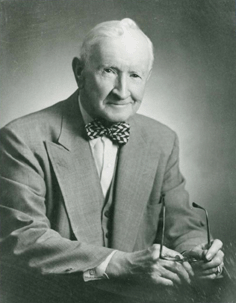
Ryan had been running a pool hall on Yonge Street and in November 1905 co-founded the Toronto Bowling Club above a store at Yonge and Temperance Street. Ten-pin bowling had been growing in popularity, but some of Ryan's customers complained that the ball was too heavy. Around 1909 he devised a new game with a smaller ball and only five pins, with a new scoring system. After receiving complaints about the pins bouncing out the window to the street, he added a rubber ring around the pins.
First 5 Pin in Bowling Centre:
When the first 5 pin bowling centre was opened in Western Canada in 1930, they opted for a different scoring system assigning the pins' values as 1,4,5,3 and 2. It was only in 1952 that the modern-day 2,3,5,3,2 scoring system was established and it it took until 1959 before it was fully adopted nation-wide and the requirement to knock-down the left pin was abolished in 1967.
Invention of pin-setting Machines:
All modern bowling centres use automated pin-setting machines (first used in 1957) to reset the pins after each ball is thrown. In five-pin, two types of pinsetters are used—"string" and "free fall".
String:
The "string" pinsetter is known for each pin having a string attached to the head. These pinsetters were first invented in 1963 and are characterized by a shield that descends and covers the pindeck while the pinsetter is working. This type of pinsetter has a low operating cost, so it is the most commonly used type of pinsetter.
Governing Bodies
Canadian Five Pin Bowler's Association (C5PBA):
The C5PBA is the body that governs the rules and regulations of the game. The C5PBA operates three major national tournaments. The showcase tournament is the "Open", a scratch tournament that involves both teams and singles. The national finals of the Open span three to four days and culminate with a stepladder format to determine national champions in men's singles, women's singles, men's teams, women's teams, and mixed teams.
Mission:
The aim of the Canadian 5 Pin Bowlers' Association is to promote, to foster the integrity of and to enhance the enjoyment of 5 pin bowling as well as to instill a sense of pride among active bowlers. To this end, the Canadian 5 Pin Bowlers' Association is a service oriented sports organization that provides quality programs and services to its members for their participation. The association regulates 5 pin bowling, resulting in standardization within the sport.
Events:
Inter Provincial National Championship
Canadian Open Championship
Canadian Youth Challenge Championship
Bowling Proprietors Association of Canada (BPAC):
- The BPAC is the body that represents the bowling centre owners. The BPAC oversees Youth Bowling Canada (YBC) and Club 55+ (formerly the Golden Age Bowler's Club). Both organizations feature national championships.
- The YBC national championship is known as the "Four Steps to Stardom" while the Club 55+ national championship is known as the "Team Triples".
- The BPAC also runs the National Classified Championships, a scratch tournament where bowlers are qualify through their bowling centre within average categories. The BPAC runs the Canadian qualifying for the AMF World Cup and the various five-pin TV shows such as CBC's Championship Five Pin Bowling and the TSN Pins Game.
- In 2006, the CBC series and the TSN series were consolidated into one tournament, the Canadian Bowling Championships. As of 2009, TSN dropped the Canadian Bowling Championships from its televised schedule.
Championships:
- Bowl Canada Cup
- Bowl World Cup
- World Cup Hall of Fame
- Club 55 Cup
- YBC National Championships
The Master Bowlers Association of Canada:
The MBAC is a unique organization that serves as the technical branch of the sport and provides a single national championship with both total pinfall and pins over average divisions. A third branch of this organization involves the Seniors Division (over 55yrs). Typically the Teaching and Senior Division bowlers hold mid- to lower-range bowling averages. Bowlers in the Teaching Division are required to serve as coaches in the YBC (Youth Bowling Canada). The Master Bowlers operate under a strict dress code including a standard shirt in the provincial colours with the bowler's name embroidered on the back.
Awards Related To Five-pin bowling
Regina 5 Pin Bowlers’ Association (R5PBA) Awards:
Recognition of high scores through the 400 Club, the R5PBA record book and the Canadian 5 Pin Bowlers’ Association awards program.Awards for rolling a perfect game
Sport Oakville Awards:
Volunteer Award:
Best coacher of 5 pin bowling
Sample Documents Of Five-pin bowling
-Sachin Tendulkar


